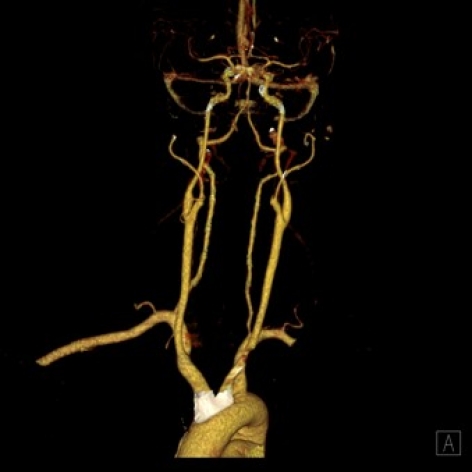CASES OF THE WEEK - “Stroke is a neurological emergency. Timely intervention can give very good results in properly selected patients” by Dr Prachet Kulkarni, Consultant Neurology & Dr Milind Raje, Consultant Radiology, NMC Royal Hospital Sharjah

Stroke is a neurological emergency. Timely intervention can give very good results in properly selected patients.
A patient presented to the emergency department with acute onset of difficulty in speaking and right sided weakness within two hours after onset of symptoms. At admission his power was 4/5 on the right side and he also had dysarthria. He was not a smoker and had no history of hypertension or diabetes. There was no such past history. He underwent an urgent CT scan of brain which was normal. He worsened after the CT scan and his power become 0/5 on the right sided with total loss of speech. His blood pressure was 190/120. In view of these findings it was decided to thrombolyze the patient urgently. (There was no contraindication for intravenous thrombolysis). NIHSS 13 before thromboysis He was shifted to ICU. The nature of disease, prognosis, treatment options possible benefits and side effects were explained to the relatives and they gave consent for IV thrombolysis. Since his blood pressure was high he was given three doses of intravenous labetolol at short intervals. His blood pressure reduced to acceptable levels and he was thrombolyzed with intravenous tissue plasminogen activator (tPA) according to the body weight.
Post thrombolysis, he has improved, started to speak (though has dysarthria), his motor power has improved to 1/5 on the right side, able to sit on the bed with support. NIHSS 11. He underwent a repeat CT brain showed a doubtful infarct in the posterior limb of the internal capsule on the right sided with no hemorrghage. Post thrombolysis CT angiogram of the brain was normal (carotid, anterior, middle and posterio circulation arteries were normal no block noted). His LDL was elevated; ECHO heart was normal, HbA1C normal. He is presently on clopidogrel, low molecular weight heparin (for DVT prophylaxis), citicholine and antihyperstensives along with intensive physiotherapy.



